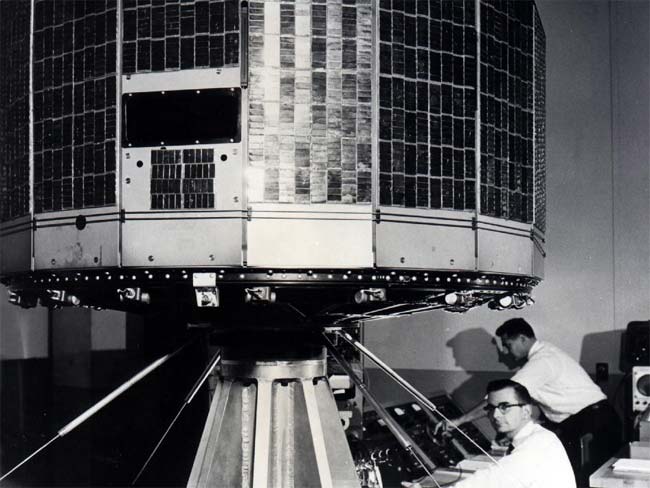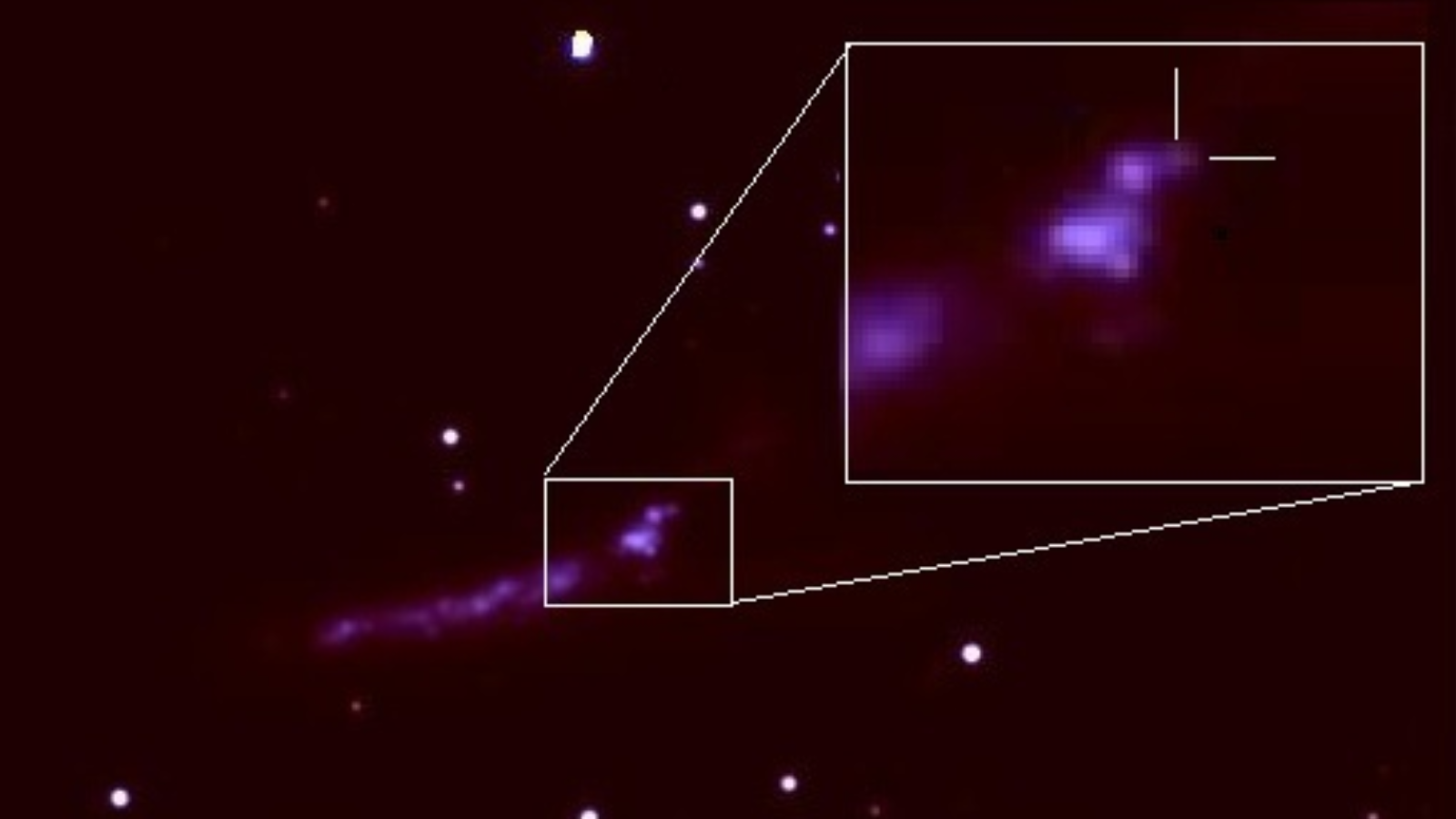How Weather Satellites Changed the World

It feels like second nature today to check tomorrow's weather on your computer or even a mobile phone, but none of this would be possible without weather satellites.
The world's first weather satellite launched 50 years ago, on April 1, 1960. By capturing this high ground, weather satellites changed a key way that humans view the future, making it possible to foresee potential disasters before they arrive and prepare for them. Now scientists are helping to prepare the next generation of weather satellites.
The first picture from this first satellite, called the Television Infrared Observation Satellite, known as TIROS-1, was a fuzzy image of thick bands and clusters of clouds over the United States. A picture captured a few days later revealed a typhoon approximately 1,000 miles east of Australia.
TIROS-1
TIROS-1carried two cameras and two video recorders in a package 42 inches (about 1 meter)in diameter and 19 inches (48 cm) high, weighing 270 pounds (123 kg)altogether. The craft was made of aluminum alloy and stainless steel, and was covered by 9,200 solar cells that helped charge its batteries. It could maneuver with the aid of three pairs of solid-propellant rockets.
The satellite was polar-orbiting, meaning the path it took brought it over both the north and south poles of Earth. Such orbits are ideal for taking pictures of the entire globe.
At the time TIROS-1was launched, the worth of satellite observations was still unproven.
Breaking space news, the latest updates on rocket launches, skywatching events and more!
"TIROS-1started the satellite observations and interagency collaborations that produced vast improvements in weather forecasts, which have strengthened the nation," NASA Administrator Charles Bolden said. "It also laid the foundation for our current global view of Earth that underlies all of climate research and the field of Earth system science."
TIROS-1was NASA's first experimental step to see if satellites could find use in studying the Earth. Although it was operational for just 78 days, "this satellite forever changed weather forecasting," said Jane Lubchenco, undersecretary of commerce for oceans and atmosphere and National Oceanic andAtmospheric Administration (NOAA) administrator. "Since TIROS-1, meteorologists have far greater information about severe weather and can issue more accurate forecasts and warnings that save lives and protect property."
The legacy
NASA launched 10 TIROS satellites in total, with each carrying increasingly advanced instruments and technology. By 1965, meteorologists combined 450 TIROS images into the first global view of the planet's weather, picking up a line of clouds over the Pacific Ocean barreling toward the United States.
In1975, NASA launched the first Geostationary Operational EnvironmentalSatellite, or GOES. Instead of a polar orbit, it had a geostationary one 22,300 miles over the equator, allowing it to watch the same area constantly. In combination with polar-orbiting satellites, these spacecraft gave weather forecasters a powerful toolkit to monitor the planet.
"We could not provide skillful hurricane forecasts without the crucial imagery and data from geostationary and polar-orbiting satellites," said Chris Landsea, the science operations officer at NOAA's NationalHurricane Center in Miami. "Before satellites, tropical storms and hurricanes were often missed if they stayed out over the open ocean. Now we know tropical storms and hurricanes have swings in numbers from decade to decade."
Weather satellites have proven key to helping saving lives during disasters. For instance, when it came to the May 31, 1985 Ohio-Pennsylvania tornado, near-real time satellite imagery helped the NationalSevere Storms Forecast Center in Kansas City provide a tornado watch warning from eastern Ohio into western parts of New York and Pennsylvania.
"The watch prompted fire chief Clayton Reakes of NewtonFalls, Ohio, to take his customary position on the top of a building in downtown Newton Falls," said Steve Weiss, science operations officer atNOAA's Storm Prediction Center. "This permitted him to observe a large tornado approaching town and sound the alarm system before the F5 tornado struck the town. Because of this series of early actions, starting with the issuance of the tornado watch based on satellite indications of developing storms, there were no fatalities in Newton Falls."
Although the tornado outbreak did claim 75 lives in the United States, it did occur during the evening rush hour, "and this tragic event could have been much worse," said Steven Goodman, senior scientist with the GeostationaryOperational Environmental Satellite-R series (GOES-R).
Beyond just keeping an eye on short-term changes in weather, technological improvements gave scientists the ability to monitor long-term changes in climate, from the subtle onset of drought and its impact on vegetation to monitoring global sea-surface temperatures that signal atmospheric phenomena such as El Nino and La Nina.
The GOESand NOAA polar satellites also help keep an eye on space weather?radiation from the sun that can wreak havoc on Earth and on satellites. By monitoring and forecasting space weather, researchers can know to postpone satellite launches, notify the astronauts on the International Space Station to seek shelter and shut down electronics to prevent damage, and help electric grid operators on Earth take steps to avert failures.
"NOAA Chief Economist Rodney Weiher estimated that the economic benefits of providing reliable warnings of geomagnetic storms to the electric power industry alone would be approximately $450 million over three years," said Bill Murtagh at the NOAA SpaceWeather Prediction Center. "Note that this doesn't include any other impacted industries, nor does it include the potential catastrophic impacts of a widespread blackout due to a geomagnetic storm."
The next generation
NOAA and NASA are now working to launch the next generation of geostationary weather satellites with the GOES-R series beginning in 2015. Its instruments will allow researchers to observe cloud and surface changes more rapidly and in greater detail to help predict weather, as well as to map lightning flashes for early warnings of storm intensification and to monitor solar radiation for better forecasting of space weather and early warnings of possible impacts to theEarth environment.
The U.S. program of polar-orbiting weather satellites recently underwent a shakeup. In February, the White House essentially dissolved the long-troubled National Polar-orbiting Operational Environmental Satellite System (NPOESS) that was to supposed to be the next-generation polar satellite system for monitoring the Earth.
Instead, NOAA and NASA are scheduled to launch another polar-orbiting satellite called the NPOESS Preparatory Project in late 2011. This will demonstrate the capabilities of next-generation sensors. NOAA and NASA will also team up to build, launch and operate two more polar satellites under the Joint Polar SatelliteSystem. The satellites, planned to launch in 2015 and 2017, should provide vital information on climate and weather.

Charles Q. Choi is a contributing writer for Space.com and Live Science. He covers all things human origins and astronomy as well as physics, animals and general science topics. Charles has a Master of Arts degree from the University of Missouri-Columbia, School of Journalism and a Bachelor of Arts degree from the University of South Florida. Charles has visited every continent on Earth, drinking rancid yak butter tea in Lhasa, snorkeling with sea lions in the Galapagos and even climbing an iceberg in Antarctica. Visit him at http://www.sciwriter.us
